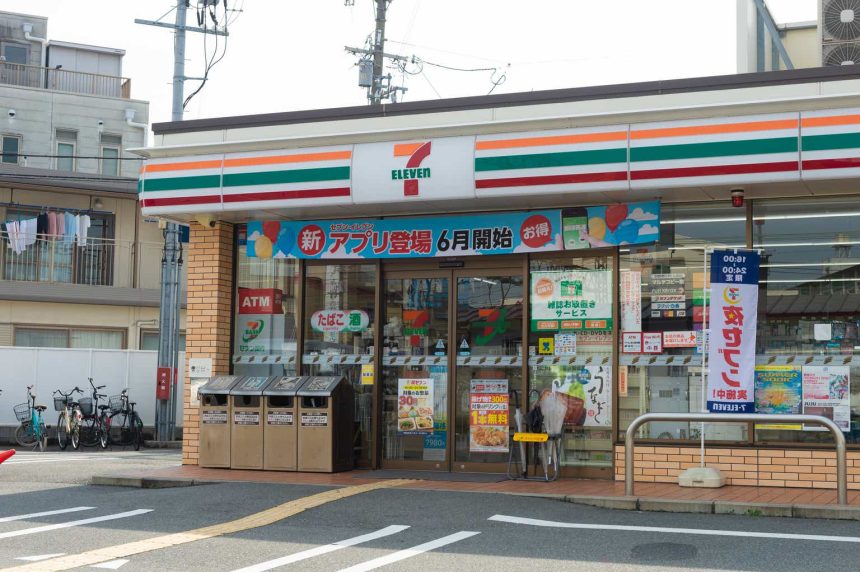Elevator Pitch
Seven & i Holdings Co., Ltd. (OTCPK:SVNDY) [3382:JP] shares are worthy of a Buy investment rating. The stock is trading at a discount to its key Japanese convenience store peer, and there are two catalysts which could push up Seven & i’s share price. SVNDY continues to restructure the company’s portfolio by divesting non-core assets, while there is a reasonably good chance of the company returning a larger-than-expected percentage of excess capital to shareholders.
Investors with an interest in Seven & i Holdings should be aware that the company has listings on both the OTC market and the Tokyo Stock Exchange. Seven & i Holdings’ Japan-listed shares boast a three-month mean daily trading value of around $100 million (source: S&P Capital IQ), and they can be traded with US brokerages like Interactive Brokers which provide access to international equity markets. The company’s OTC shares also have decent trading liquidity, as the average daily trading value for SVNDY in the last three month was roughly $2 million.
Company Description
Seven & i is a Japanese conglomerate that owns and operates “convenience stores, superstores, supermarkets, specialty stores, food services, financial services and IT services” businesses as indicated on its corporate website.
As highlighted in its Q1 FY 2023 (YE February 29, 2024) results presentation, SVNDY’s core convenience store business (both local and foreign operations) contributed approximately 83% of its most recent quarterly EBITDA.
In terms of geographical market exposure, Seven & i Holdings’ home market Japan accounted for 46% (source: S&P Capital IQ) of its FY 2022 operating profit, while it derived the rest of its operating earnings from international markets such as North America.
Restructuring The Company’s Business Portfolio
At the beginning of this month, Seven & i Holdings announced that it had concluded the sale of its department store business arm known as Sogo & Seibu. SVNDY specifically mentioned in this announcement that the divestment of its department store business operations is done to “re-invest the Company Group’s management resources in the Convenience Store (‘CVS’) businesses as our growth driver.”
This recent development is part of Seven & i Holdings’ plans to sell the company’s non-core businesses and assets. The company mentioned in its Q1 FY 2023 earnings presentation that it divested its fashion apparel retail business, Barneys Japan, in May this year. Last year, sporting goods retailer OSHMAN’S was sold to a third party by SVNDY. In 2011, Seven & i Holdings monetized part of its equity interest in interior goods business Francfranc, which resulted in SVNDY’s stake declining from 30.0% to 23.5%.
Seven & i Holdings’ core domestic convenience store business, Seven-Eleven Japan, is the outright leader in the country with a 45.9% market share for FY 2022. One of its key peers is Lawson (OTCPK:LWSOF) (OTCPK:LWWLY) [2651:JP], which has a relatively lower 20.4% share of the Japanese convenience store market.
But investors don’t appear to have assigned a fair valuation to SVNDY’s market-leading convenience store business. Seven & i currently trades at a consensus forward next twelve months’ Enterprise Value-to-Revenue of 0.69 times and a historical trailing twelve months’ P/B multiple of 1.56 times as per S&P Capital IQ valuation data. Its Japanese convenience store peer, Lawson, is valued by the market at 1.16 times consensus forward Enterprise Value-to-Revenue and 2.63 times historical trailing P/B.
It is reasonable to assume that there is a meaningful conglomerate or holding company discount assigned to Seven & i Holdings. But this valuation discount is likely to be narrowed over time as SVNDY sells its non-core businesses and places a greater emphasis on its core convenience store business. In March this year, Seven & i Holdings disclosed that it had formed a “strategy committee” to “review the optimal group portfolio structure and strategic alternatives (IPO, spin-off, etc).” It is fair to say that there should be more non-core asset monetization moves for SVNDY going forward, and this will most probably act as a re-rating catalyst for the stock.
Increasing Shareholder Capital Return
There are various signs suggesting that Seven & i Holdings’ return of excess capital to shareholders in the future might surprise the market in a positive manner.
In its September 2023 department store business divestment announcement, referred to in the previous section, SVNDY emphasized that this recent transaction forms part of its plans to “enhance capital return to our shareholders.” This implies that part of the cash proceeds from the sale of Sogo & Seibu could be potentially utilized for share repurchases and dividends.
At the company’s corporate strategy presentation in March this year, Seven & i Holdings stressed that it “will be able to reach a lower Debt/EBITDA ratio” than initially expected, because its “cash flow-generating ability has increased.” The company’s debt-to-EBITDA metric was 3.0 times at the end of fiscal 2022, and it is targeting to lower this ratio to 1.8 times or lower as of end-FY 2025. A more comfortable financial position in terms of its leverage metric will provide SVNDY with greater flexibility to distribute a greater proportion of its dividends and buy back more of its own shares.
Seven & i Holdings’ ROE was 8.7% for FY 2022, and the company wants to achieve a much higher ROE of 11.5% in FY 2025. It is realistic to assume that SVNDY will rely on dividends and buybacks to shrink the company’s equity base as part of the initiatives to boost its future ROE. The company has guided for a +9.7% increase in its dividend per share (excluding special dividends in FY 2022) for full-year FY 2023 (March 1, 2023 to February 29, 2024).
Closing Thoughts
Seven & i Holdings’ shares are cheaper than its key peer, and I have identified two major re-rating catalysts for the stock. This explains my decision to assign a Buy rating to SVNDY.
Editor’s Note: This article discusses one or more securities that do not trade on a major U.S. exchange. Please be aware of the risks associated with these stocks.
Read the full article here



